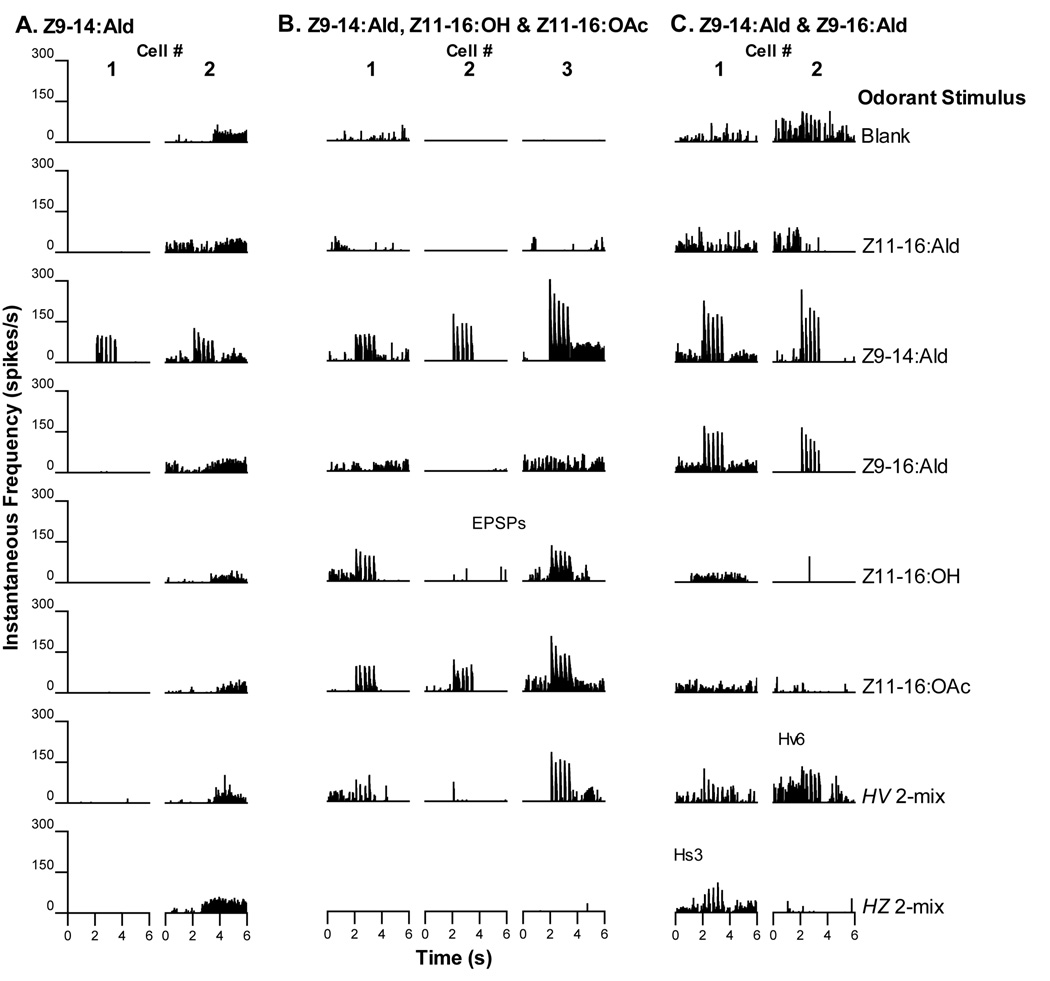Figure 9.
Additional olfactory PNs in Z-V transplant males exhibited physiological response properties that were similar to those described previously in studies of normal H. zea males indicating that the donor antennal imaginal disc not only controls the fate of the glomerular architecture but also the physiological profiles of central PNs. A. Two PNs were excited only when presented with Z9-14:Ald. B. Three PNs exhibited excitatory responses to 3 odorants: Z9-14:Ald, Z11-16:OH and Z11-16:OAc. Cell #1 was approximately equally sensitive to all 3 odorants. Cell #2 exhibited stronger responses to Z9-14:Ald compared to Z11-16:OAc. Although stimulation with Z11-16:OH did not elicit action potentials, strong excitatory post-synaptic potentials (EPSPs) were observed. Cell #3 also responded most vigorously to Z9-14:Ald with weaker responses to Z11-16:OAc and Z11-16:OH. This type of PN would be expected to arborize in the DM-A glomerulus of a normal H. zea MGC. C. Two PNs responded to stimulation with both Z9-14:Ald and Z9-16:Ald. Responses to Z9-14:Ald were slightly more vigorous compared to Z9-16:Ald. Blends containing either of these odorants elicited weak responses likely because the dosages of these odorants were much lower in each of the blends. Neurons with this type of physiology were encountered in H. zea males and arborized in the DM-P glomerulus (Fig. 1). Hv6, H. virescens 6-mix used as stimulus; Hs3, H. subflexa 3-mix used as stimulus (see Materials and Methods for details).

